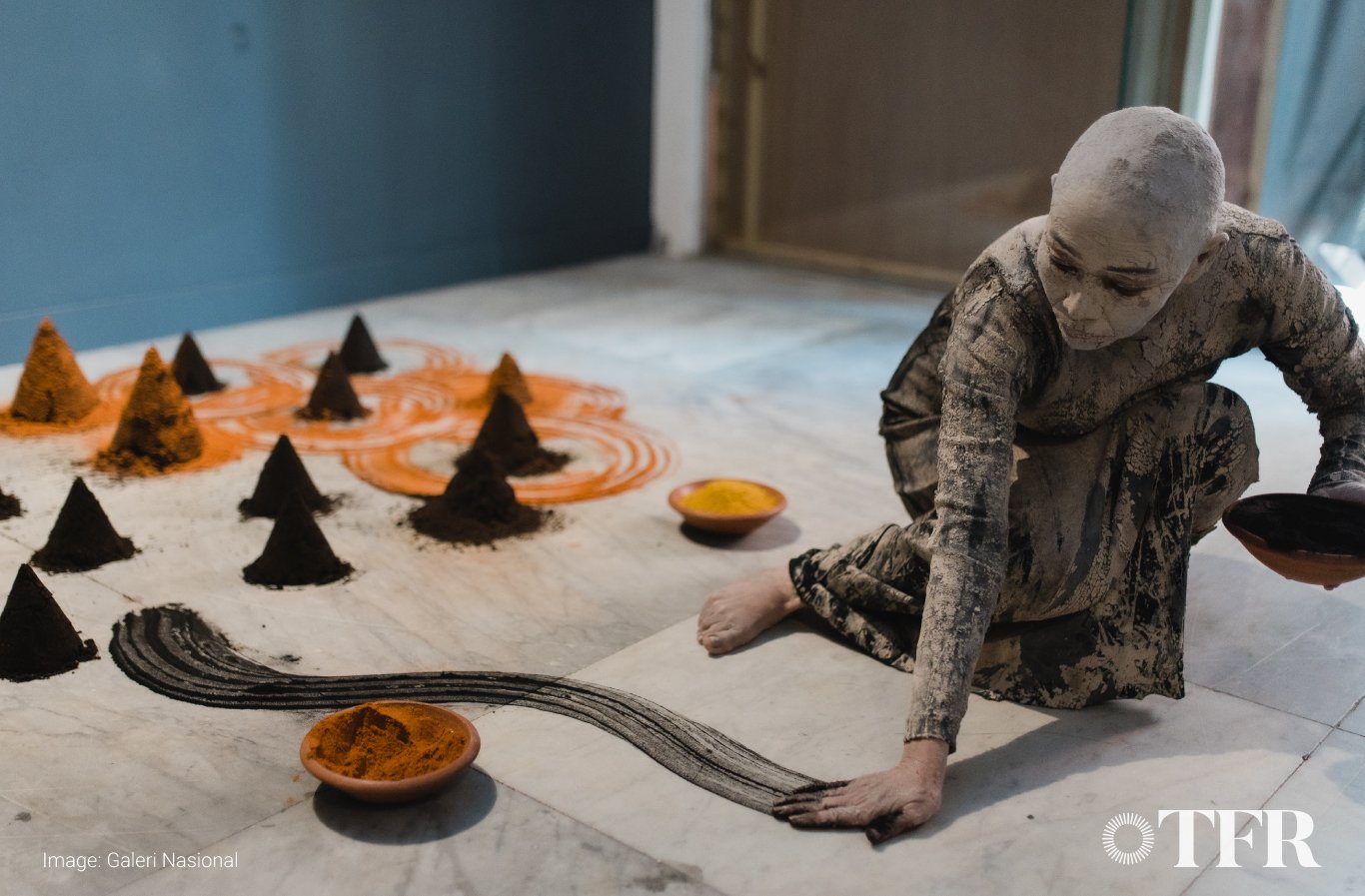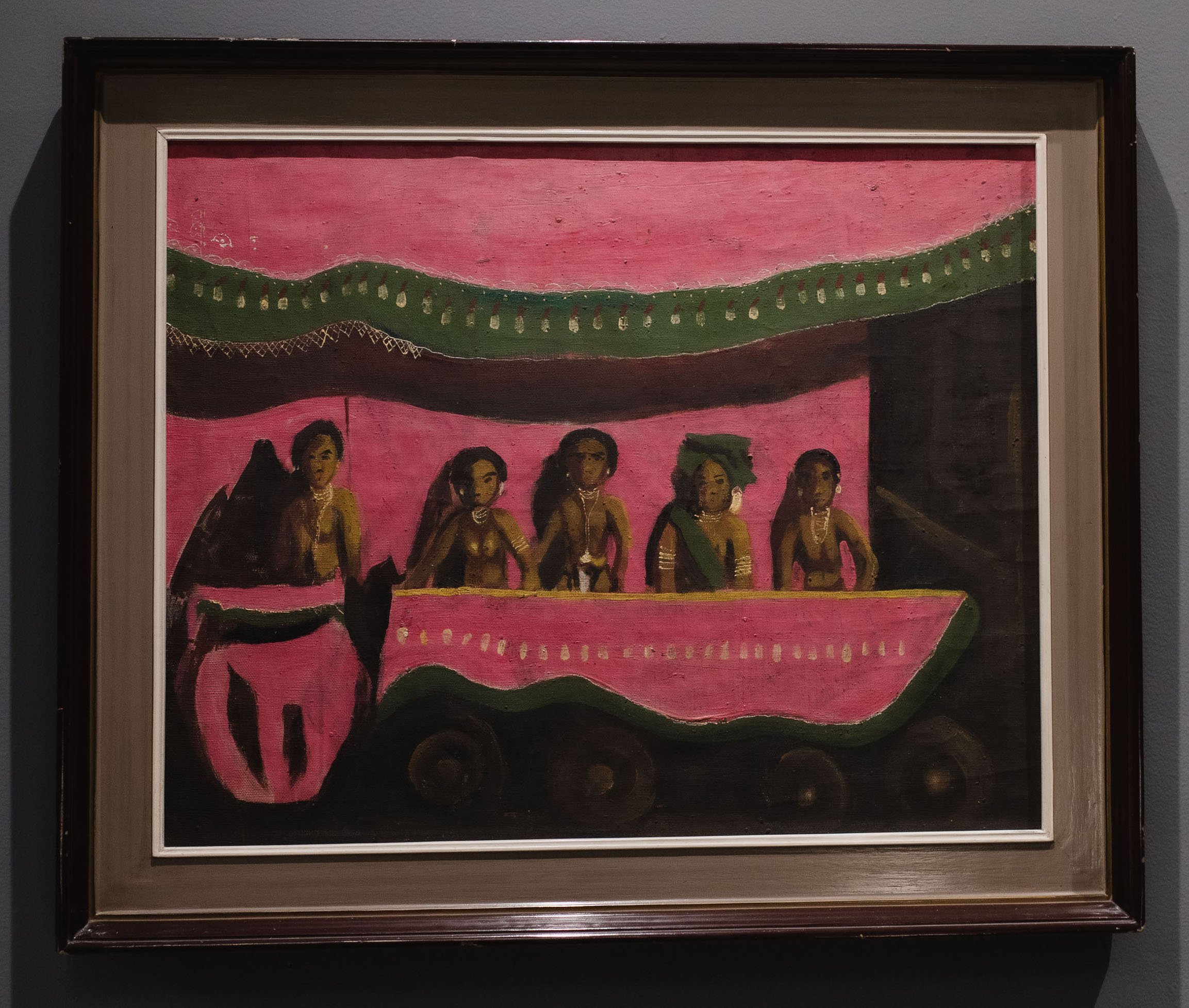Indonesian women artists and the challenges they face from time to time
Read in Indonesian
How many Indonesian women artists do we know? What is the role of women artists in the Indonesian art scene? These questions often arise in our minds. From time to time, women artists have made achievements, both in terms of artistic aspects and ideas as well as their influence on cultural development in their environment.
The exhibition “Para Sekutu yang Tidak Bisa Berkata Tidak” is currently underway at the National Gallery. There, we can see the diverse works of 51 artists, including Indonesian women artists. First, let's take a look back at the position of women artists in the history of art.
The curator of the “Para Sekutu yang Tidak Bisa Berkata Tidak” exhibition, Grace Samboh, said that the problems of women artists in the history of art can be understood by taking out the word “artists”. That way, we realise that we are talking about "women" as a whole, who are in a social order that is unfortunately still patriarchal.
Citing Linda Nochlin's writing, “Why There Have Been No Great Women Artist”, the point of view of white Western men has been unconsciously ingrained and accepted as the point of view of art historians. This was not caused by moral and ethical reasons or because it was elitist, but purely for intellectual reasons.
Oftentimes there is a blurring of the role of women in art as creators and as artists as a whole. This point of view is also embedded in the depiction of women in several canon works. Male Gaze, which we know in the history of world art, is a perspective that objectifies and demeans women. This view is embedded in the recording of mainstream history of world art.
The history of Indonesian art has recorded several names of women artists who played a role in its development, although the number is much smaller than their male counterparts. Alia Swastika's writing, “Membaca Praktik Negosiasi Seniman Perempuan dan Politik Gender Orde Baru” (2019), examines these problems and their relationship to the social and political order that applies in Indonesia.
A fairer recording of art history for women and other marginalised groups can be realised by using a feminist point of view, said Alia in the same article. This view can build awareness to criticise mainstream art history which is canon and sided with masculine domination.
During the 1980s in Indonesia, there were quite a few exhibitions involving women. Unfortunately, there is only a minimum recording of this in art history, let alone being part of the canon because it is considered only as a commercial product. Art critic Sanento Yuliman said that the issues faced by women artists in Indonesia is not about aesthetic sophistication, creativity or ability. The core of the problem is opportunity and accessibility as well as social restrictions. (Alia Swastika, 2019)
If we look back at the acts of injustice against women in Indonesia's socio-political history, we can see how the depoliticisation and domestication efforts during the New Order era played an important role in building this paradigm.
Women were seen as unproductive human beings, who depend on their husband's income and do all household chores. The “guidance” programme, the existence of the PKK, solidified this. Alia cited a note from Julia Suryakusuma who stated that the PKK is an introduction to “priyayisation” and “motherism”.
Even in the realm of fine arts, women are often seen as doing art as if it is just a hobby, done in their spare time while they also perform other activities under their other positions of identity. Women's ideas and thoughts are merged as part of society, which is naturally patriarchal.
Therefore, the works of women artists are often associated with traditional heritage, such as batik, weaving and ceramics; forgetting the representation of thoughts in it. On the other hand, when looking at historical facts, we can see that a number of women artists played a major role in the history of art.
Let's find out several Indonesian women artists whose works are being exhibited in the exhibition "Para Sekutu yang Tidak Bisa Berkata Tidak".
Cinanti Astria Johansjah (b. 1985)
Cinanti Astria Johansjah treats art as a medium to examine, rethink and organise the fragments of life. Popularly known as Keni, the graphic design alumnus of the Bandung Institute of Technology often displays her portrait as a woman along with various animal figures. Through her works, she questions and even mixes the various traits and attitudes of human life through various animal characters.
In the exhibition, we will see two pairs of hanging animal feet resembling buffalo and chickens, added with drops of deep purple ink resembling election ink. Footprints are scattered across the room without a definite direction.
Image: Cinanti Astria Johansjah, The Expendables_ Jejak (2022), site specific installation using stamp and stamp ink
Emiria Sunassa (b. 1895, d. 1964)
Emiria Sunassa represents an important chapter in the development of the Indonesian painting scene. While undergoing nursing training at the Cikini School, during World War I she travelled to Belgium and Austria to study painting under Guillaume Frédéric Pijper. Upon her return to Indonesia, she and several other painters including Agus Djaya and Sudjojono founded the Association of Indonesian Drawing Experts (PERSAGI) as a response to the hegemony of painters from the Netherlands and other European countries in Indonesia. Through her paintings, Emiria presents the dark side of the marginalised nation, which cannot be expressed in the romantic aesthetics of colonial painters.
Some of her works were displayed in the first round of the exhibition. “Pengantin Dayak” (1941-1946) by Emiria Sunassa shows Emiria's support for minority ethnic groups in Indonesia. A part mentioning Emiria in Heidi Arbuckle's thesis was also exhibited.
Image: Emiria Sunassa, Pengantin Dayak circa 1941–1946 (reproduced 1971–1972), oil paint on canvas 68 x 54 cm
Dolorosa Sinaga (b. 1952)
Dolorosa Sinaga creates art for justice. Studying sculpture at the Jakarta Arts Education Institute (now IKJ), she designed her works as a voice of solidarity in various human rights cases in Indonesia, from the events of 1965 to 1998. Apart from creating art, she also teaches at her alma mater. She served as the Dean of the Faculty of Fine Arts at IKJ and helped design the Art and Activism programme. Now, she serves as director of the 2021 Jakarta Biennale and is active in various humanitarian movements.
Image: Dolorosa - Solidaritas III (2000)
Kustiyah (b. 1935, d.2012)
In her daily life, Kustiyah is known as a gentle person, in contrast to her painting. Her works are dominated by sharp lines and rough colour strokes. Through her distinctive artistic approach, she paints the living environment around her, transforming familiar and earthy natural landscapes into visual expressions that are turbulent and full of energy. Kustiyah's journey as a painter began at ASRI Yogyakarta, which she later completed with the People's Painters and Indonesian Painters community.
Image: Kustiyah, Tiga Domba (1963), oil paint on canvas
Marintan Sirait (b. 1960)
Marintan Sirait works with her body a lot. In her body of work that spans from drawings and paintings to installations, consistent body movement is the main element. For the graduate of the Ceramics Department of ITB, the body is a tool as well as a channel for energy to open primordial awareness. In 1988, she co-founded Sumber Waras, a group of experimental artists. Together with Andar Manik, her husband, she founded Jendela Ide, a special cultural institution for children and youth, in 1995.
In her performance, she goes through almost the entire exhibition hall. Marintan also features an installation of cone-shaped earthen mounds arranged in such a way, with sand, ash, light and body movements. “Membangun Rumah” for Marintan is an attempt to live the personal body, to feel the relationship between the body and time, space and other objects around it.
Image: Marintan Sirait, Membangun Rumah (2022), installation and performance arts
Siti Ruliyati (b. 1930)
Siti Ruliyati is known for her contrasting visual aesthetic. The pencil strokes are strong, tense, stiff and hard, but the visual composition seems so soft and feminine. As a painter who started her activity during the revolutionary period, Siti's support for the people is reflected in her paintings and drawings. In the 1960s, the ASRI Yogyakarta alumnus moved to Jakarta and was active in solo exhibitions. Her work as an illustrator is familiar to the public through a number of cultural magazines, such as Budaya Jaya, Indonesia and Zenith. Throughout her life, Siti lived from her artistic works, from painting, drawing and selling postcards and greeting cards to opening painting class.
Image: Siti Ruliyati, Pasar Burung (1965), oil paint on canvas 60 x 95 cm
Siti Adiyati (b. 1951)
Siti Adiyati, known as Atik, is an artist, writer and co-founder of the Indonesian New Art Movement. In the 1980s, she regularly wrote for newspapers, magazines and art journals in Indonesia. After returning from her trip to Japan and France, she rediscovered the collection resulting from the exchange "Jakarta-Paris 1959" and then initiated the work of data collection, archiving, conservation and exhibition of the collection to the public in 1992. Together with Gendut Riyanto, FX Harsono and Hendro Wiyanto, she published the journal DIALOG Seni Rupa (1990-1994).
Image: Siti Adiyati, Bermain Dakon (1977), installation of canvas, fibre, acrylic, shells 200 x 200 x 34.5 cm
The article "Looking for Women Artists in the Directory" published on the Coalition of Arts website shows the inequality in the representation of women in art in today's directory. The cause is the lack of recording of women artists in mainstream history and the strong dominance of men in art exhibitions. From this fact, it is realised that there is a need for more inclusive recording.
We must realise that women in fine arts are often only recorded in private correspondence and are overlooked in public records. This can be circumvented by increasing the representation of women in art. It is important to open channels that allow artists to register themselves independently, which then made into a stable directory in order to produce a more inclusive recording.


























